Rail networks developed in various parts of Japan during the early 1900s. During this era, the development of hydroelectric dams meant that goods, previously transported by river, could no longer be carried in that manner. The haulage of wood, including timber from Kiso, was switched to rail transport.
In 1916, the first forest railway, the “Ogawa Line”, was opened, employing a full-scale locomotive and tracks. The Ogawa Line connecting Agematsu and Akasawa can be considered the dawn of forest railways activity in the area. Before long, the tracks of the Kiso Forest Railway grew to a total length of over 500 km in this are alone.
Steam locomotives from makers all over the world were analyzed for their application as haulage locomotives. Among them, locomotives from the American company Baldwin Inc. had earned a strong reputation. Ten of these locomotives were later imported, becoming the backbone of the Kiso Forest Railway.
Initially, the Forest Railway was tasked only with the transport of lumber. But the dedicated rail network, penetrating deep into mountainous areas, was soon recognized for its potential to carry human passengers as well.
Although previously carriages to carry workers were also connected to the lumber haulage cars, eventually residents were permitted occupy any vacant seats, also accepting a logistical responsibility. Certificates were issued to the local residents, allowing them to ride for free, although they also became the default baggage handlers. Additionally, in exchange for paying no fare, travelers on the railway also waived any rights to state compensation in the case of an accident. In spite of this, the Forest Railway became a popular and indispensable feature of life in Kiso. |
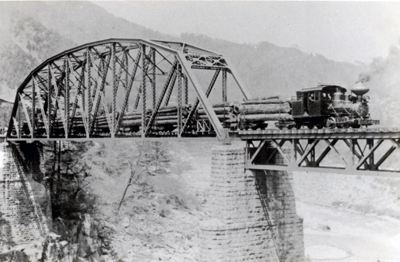 |
The era was then rocked by a period of upheaval. Plunging into the World War II saw domestic resources rapidly depleted. Faced with insufficient supplies of coal to power the locomotives, officials turned to scraps of wood and branches from trees felled in the mountains to keep the engines running. However, unlike coal that burned rapidly in the locomotive’s firebox, the new fuel caused still burning sparks to be ejected from the chimney, presenting a fire hazard wherever the trains traveled. After several years of trial and error a greatly enlarged chimney was designed that no longer ejected sparks, and an extended bunker was incorporated to carry the new, bulkier, fuel. In this way, the steam locomotives of the Kiso Forest Railway took on their own distinctive style.
The Baldwin model locomotive that you can see preserved in Akasawa today was adapted through this process.
However, while the war impoverished the lives of the people, the lack of resources also caused losses from the Forest Railway. Aging and historical steam locomotives were dismantled and their precious iron requisitioned for the war effort. Of the 10 original Baldwin locomotives, only 3 remained after the war.
Following the war, Japan gradually entered a period of growth. Transportation technology transitioned from steam to internal combustion engines and diesel locomotives were introduced on the Kiso Forest Railway. The three remaining Baldwin locomotives were retired in 1960. Two of the three brothers returned to the United Stated, via Nagoya Port, and are now preserved at the California State Railroad Museum.
The last remaining locomotive is that first locomotive introduced to the Kiso Valley at the opening of the Ogawa Line.
|
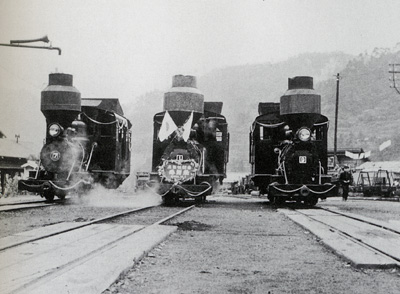 |
By 1975, Japan had entered a period of rapid economic growth, and the transportation environment shifted once again. Railways became electrified and refinements of the internal combustion engine produced trucks that conveniently allowed lumber to be transported without the need for railway tracks. And so the Kiso Forest Railway was deemed to no longer serve an essential function.
At this time, the nation’s Forest Railways disappeared, one after another and Kiso, the last line in the country, became a popular topic. A special program was aired on TV, and as the final operating date approached, bustling tent villages developed at each station.
And so the day of the final run came, and the Baldwin model locomotive that had until then been kept in storage, bowed out in memorable fashion.
Passing under an arch decorated with the message “Farewell Forest Railway, Hello Trucks”, the curtain closed on this era of the Kiso Forest Railway.
... but the light of the regions popular forest railway was not completely extinguished. |
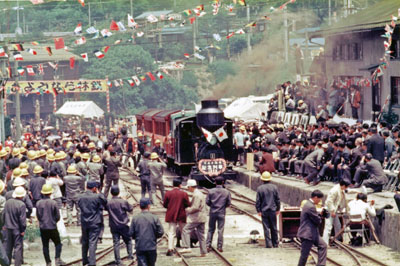 |
Although the line no longer served a commercial purpose, an increasing number of voices wished to see it preserved and the government announced the establishment of the forest railway memorial museum. In the new and pioneering, state owned Natural Recreation Forest of Akasawa, tracks were laid and the vehicles and materials of the railway’s operational era were collected for the purpose of preservation.
The railway attracted a great deal of attention around the celebrations for the 1985 “Shikinensengu” event.
Once every 20 years, the shrine at Ise is rebuilt in the Sengu ceremony. The primary material required for the rebuilding is natural cypress timber and the Kiso region shares close ties to Ise Shrine. The forest of Akasawa was thus appointed to provide the timber for the 61st Sengu ceremony.
The felling ceremony was broadcast across the nation by TV and in newspaper reports. This coverage included images of the sacred timber being transported by the forest railway. Akasawa’s forest railway once again drew attention from across the nation as viewers exclaimed, “it still remains?” and “there are still tracks on which the trains can run?”
Agematsu Town spent the following two years preparing to capitalize on the renewed interest, until, in the summer of 1987, the Akasawa Forest Railway finally resumed operation as a tourist attraction.
Visitors to Akasawa doubled, as people came from all over to enjoy the forest’s verdant fresh green through to the vibrant fall foliage.
The opening of the Akasawa Forest Railway also saw the debut of an annual nature experience event, the “Tom Sawyer Club Village Kiso & Agematsu”. It has become common for customers who first attended the event as children, to now bring their whole family along to enjoy the fun.
These days the Akasawa Forest Railway also enjoys increasing numbers of tours and visitors from abroad. The round trip through the park is relatively short 2.2 km, but the affection for the railway, and its history, has spread throughout the Kiso region.
|
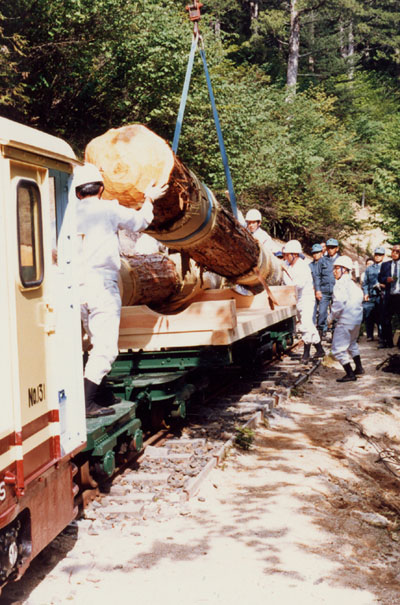 |


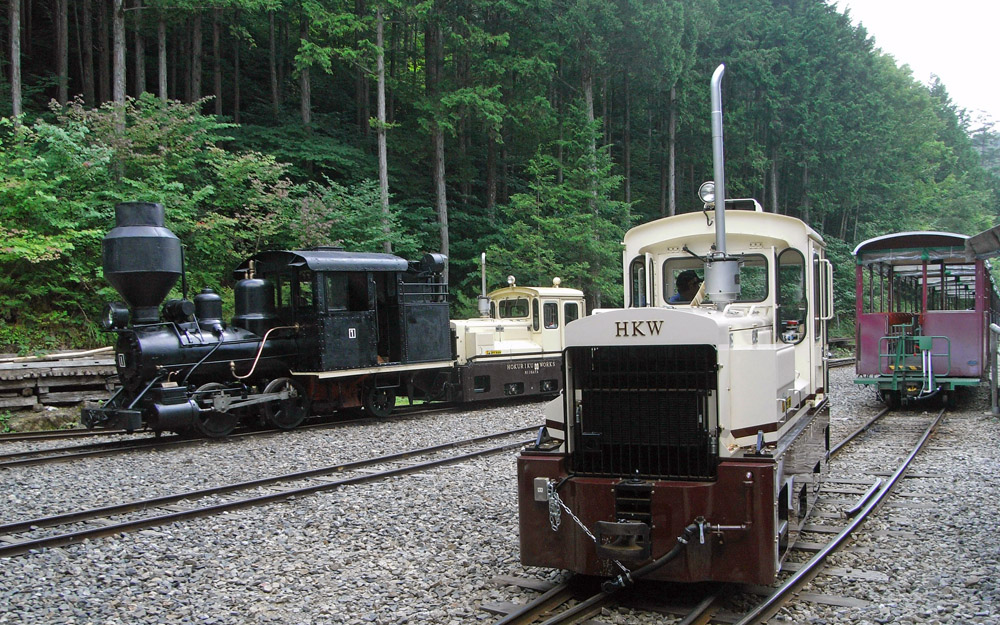
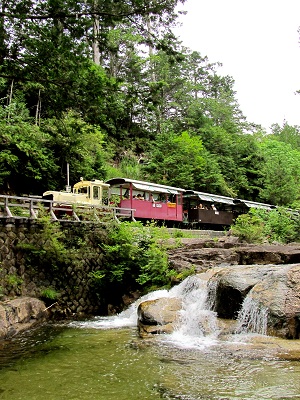

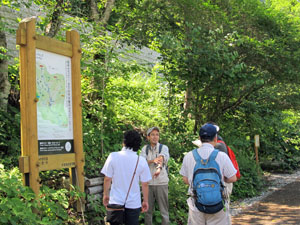

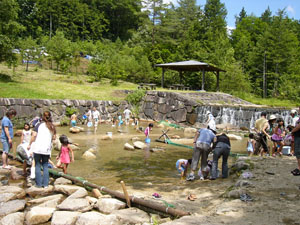

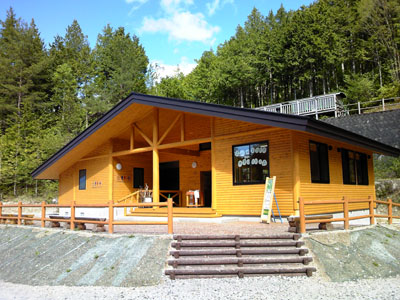
![]()
